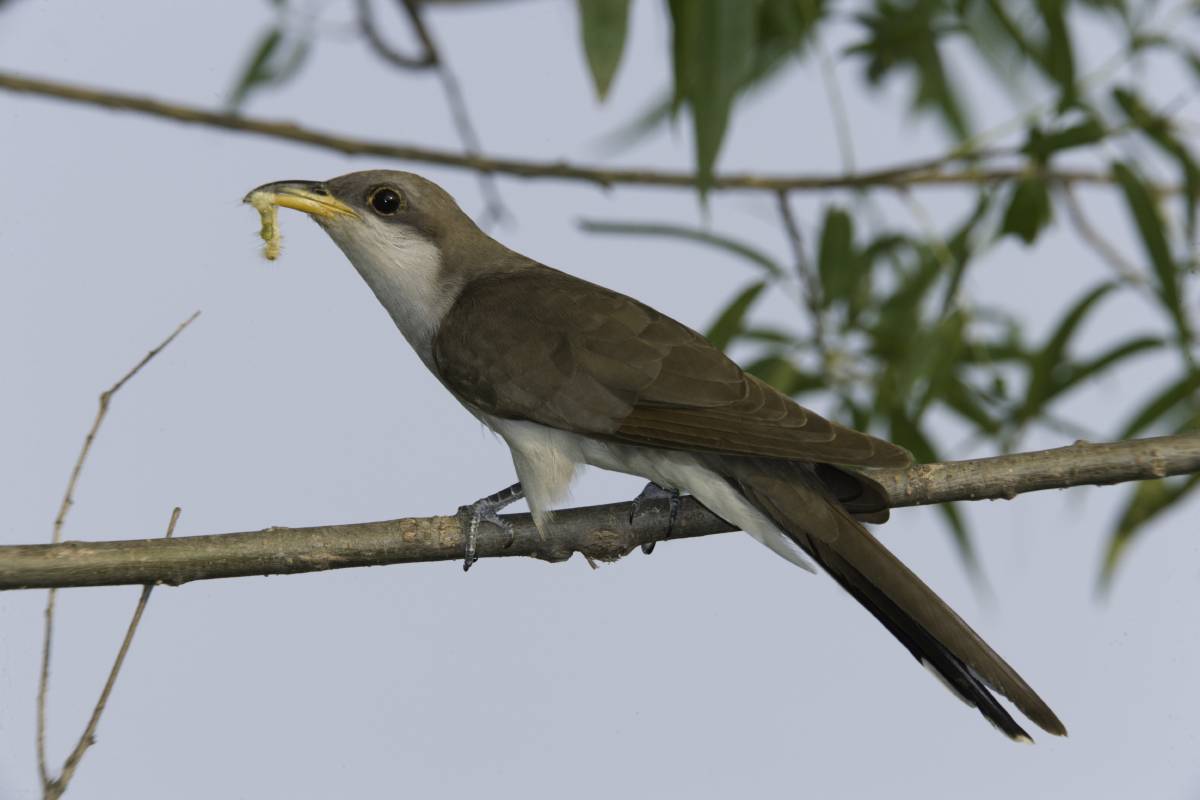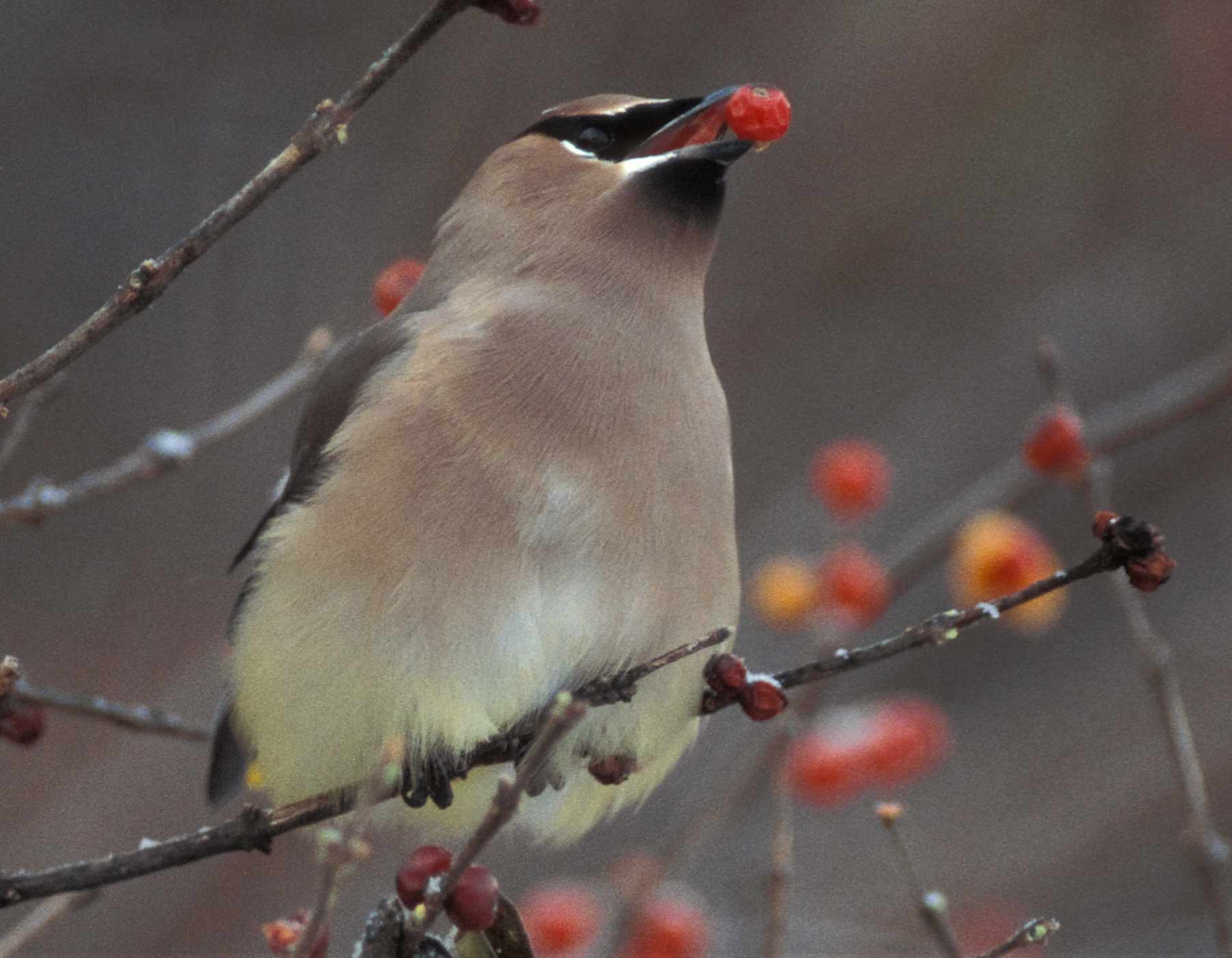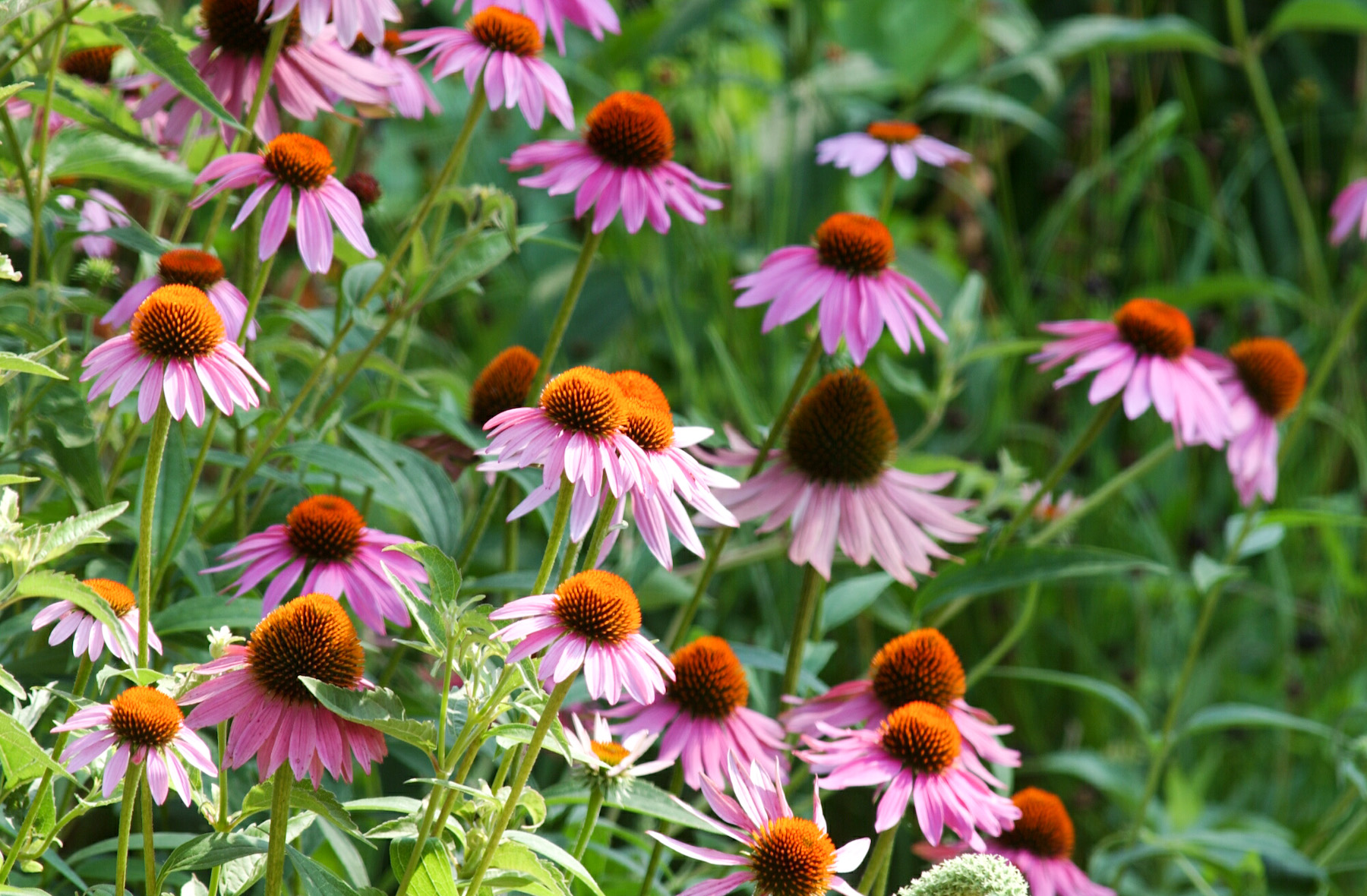Putting out bird seed is only one way to attract birds to your yard. Planting the right native flowers, trees, and shrubs will also bring them in. Trees, shrubs, vines, and flowers that are native to Missouri attract native insects that support birds with additional foods and also provide cover and nesting sites.
Plant Native
Standard grass lawns and ornamental plants don’t provide very much in the way of food or habitat for native insects, which birds require to survive! Adding native plants and trees to your yard will make your property much more inviting to birds and other wildlife. Once established, many native plants will self-seed and return year after year with little or no maintenance, so they have the added benefit of saving you time and effort.
Grow Native! provides color photos and detailed information on more than 200 Missouri native plants. It also features a guide for where to buy them.
Trees and Shrubs
Trees and shrubs provide birds with cover for nesting and hiding from predators. They serve as perching sites from which birds can view the area for food and watch for nearby predators. They also are home or food to insects and caterpillars that many birds eat.
Oaks in particular support the most caterpillars — food for birds — of any native trees. Other native tree species can support up to or around 100 caterpillar species, but they pale in comparison to the productivity of oaks. Oaks support 897 species of caterpillars!
Oaks also produce acorns. These, as well as nuts from hickories and buckeyes, serve as food for jays, woodpeckers, and turkeys.
Many native trees and shrubs produce fruits and berries that birds enjoy. Native fruit-producing trees and shrubs that birds like and also grow well in Missouri include:
- Dogwood
- Hawthorn
- Holly
- Eastern red cedar
- Serviceberry
- Elderberry
Holly, hawthorn, cedar, and persimmon are favorites of cedar waxwings. Waxwings will arrive in large flocks in winter and stay as long as the food supply lasts.


Flowers
Many native flower species that are great for pollinators are also great for birds. Tubular flowers such as cardinal flower and penstemons will attract hummingbirds. Other native Missouri flowers produce seeds that are eaten by goldfinches, purple finches, house finches, many types of sparrows, and others. These include:
- Purple coneflower
- Missouri primrose
- Prairie blazing star
- Blue false indigo
- Grey-headed coneflower
- Lanceleaf coreopsis
- Rose verbena

Provide Water
To increase the popularity of your feeding station, provide water — especially during drought or when the temperature stays below freezing for several days. Carolina wrens and bluebirds may be enticed to feeding stations during the winter, too, if water is available.
Add a bird bath to your yard. Replace the water every day or two to keep the water fresh and clean. Birds often leave feces or feathers in the water, which can grow bacteria and can spread to other birds. Wash the bird bath every week or two with a weak vinegar-water solution (nine parts water to one part vinegar). To keep water from freezing in winter, you can get a heater to place in the bird bath or find affordable heated bird baths.
Other Tips:
Keep your yard a bit less tidy
Consider letting a portion of your yard go a bit “wild.” Shrubby areas provide great cover for birds, leaf litter houses insects for them to eat in the fall and winter, and brush piles do both! Save yourself the raking — it really does help wildlife in your yard!
Reduce pesticide use — let birds eat insects in your yard
Many birds depend on caterpillars, moths, and other insects for food. Reduce the amount of pesticides used in your garden and on your landscaping — the birds will thank you!





















